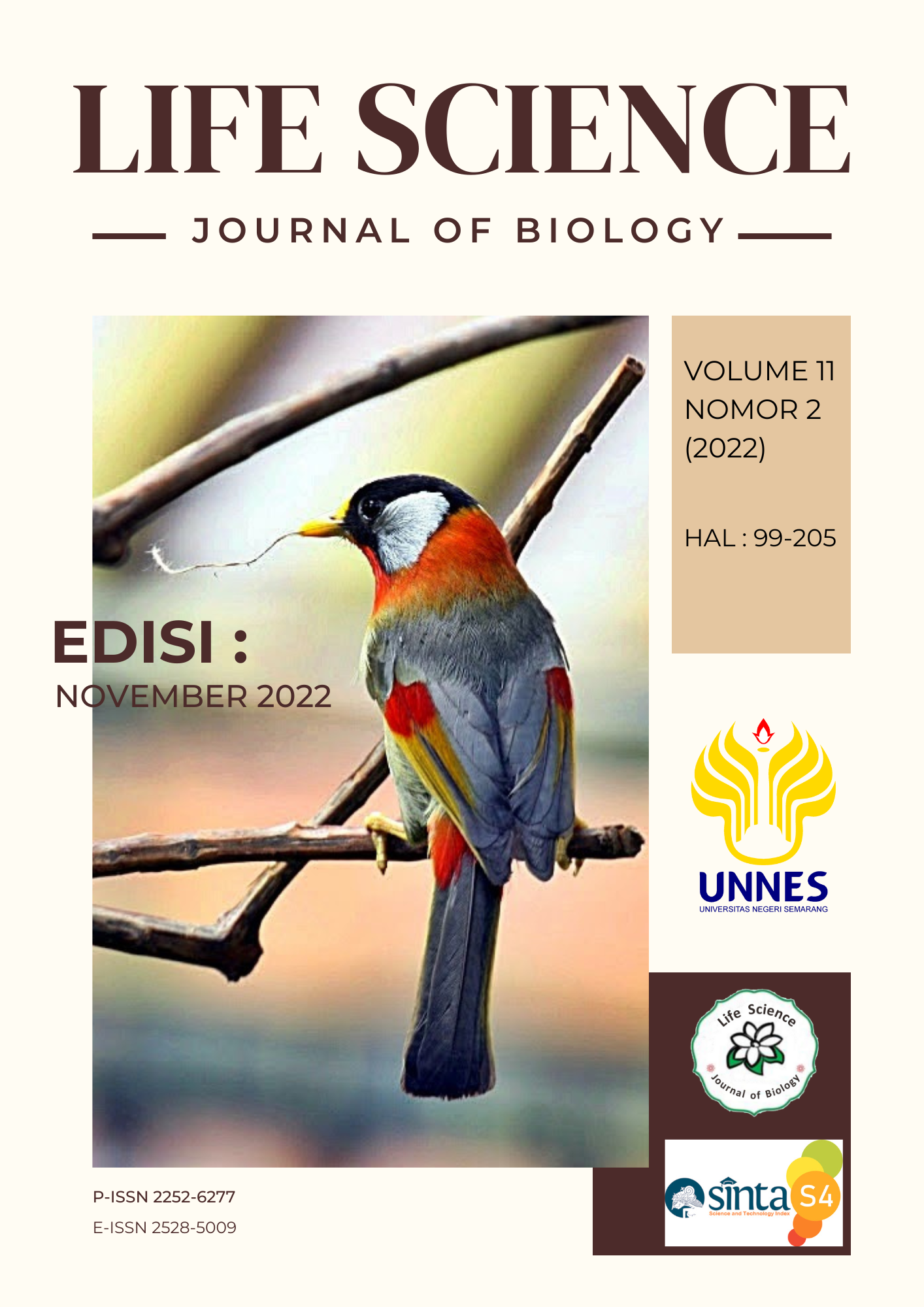Biokonversi Limbah Roti Apkir Dan Ampas Tahu dengan Memanfaatkan Larva Hermetia illucens
Main Article Content
Abstract
Bioconversion is the process of converting organic matter into valuable products by involving living organisms. The bioconversion process can be used for the management of expired bread and tofu waste into feed for H. illucens larvae. H. illucens larvae are known to be rich in protein content that can be used as an alternative protein. This study aims to analyze the results of giving expired bread and tofu dregs to weight, survival rate, waste reduction index, and nutrition of H. illucens larvae. This study used an experimental method using a Rancangan Acak Lengkap (RAL) technique with four treatments and five replications. The organic waste used as feed media for H. illucens larvae were 100% expired bread (control), 10% expired bread 90% tofu dregs, 20% expired bread 80% tofu dregs, 30% expired bread 70% tofu dregs for each treatment. using 1333 (3.06 g) test animals obtained from the Tempat Pengolahan Sampah Terpadu (TPST) Universitas Negeri Semarang. The results showed H. illucens larvae fed 30% expired bread 70% tofu dregs gave the best results with an average weight of 0.21 g/larva, a survival rate of 96.5%, and a waste reduction index of 6.13%/ day. The results of proximate nutrition analysis of H. illucens larvae showed the highest Protein content in feed with a high concentration of tofu waste (90% tofu waste) which was 43.14%, the highest fat content was found in larvae with 100% expired bread feed, which was 44.64%, while the water content in the highest larvae was found in the treatment of 20% expired bread 80% tofu dregs which was 6.8%.
Biokonversi merupakan proses pengubahan bahan organik menjadi produk bernilai dengan melibatkan organisme hidup. Proses biokonversi dapat dimanfaatkan untuk pengelolaan sampah roti apkir dan ampas tahu menjadi pakan larva H. illucens. Larva H. illucens dikenal kaya kandungan protein yang dapat digunakan sebagai protein alternatif. Penelitian ini bertujuan menganalisis hasil pemberian roti apkir dan ampas tahu terhadap bobot, tingkat kelulusan hidup, indeks pengurangan sampah, dan nutrisi larva H. illucens. Penelitian ini menggunakan metode eksperimen menggunakan teknik Rancangan Acak Lengkap (RAL) dengan empat perlakuan dan lima ulangan. Sampah organik yang digunakan sebagai media pakan larva H. illucens adalah 100% roti apkir (kontrol), 10% roti apkir 90% ampas tahu, 20% roti apkir 80% ampas tahu, 30% roti apkir 70% ampas tahu masing-masing perlakuan menggunakan 1333 (3,06 g) hewan uji yang diperoleh dari Tempat Pengolahan Sampah Terpadu (TPST) Universitas Negeri Semarang. Hasil penelitian menunjukkan larva H. illucens yang diberi pakan 30% roti apkir 70% ampas tahu memberi hasil terbaik dengan rata-rata bobot 0,21 gr/larva, tingkat kelulusan hidup 96,5%, dan indeks pengurangan sampah 6,13%/hari. Hasil analisa nutrisi proksimat larva H. illucens menunjukkan kadar protein tertinggi pada pakan dengan konsentrasi ampas tahu tinggi (90% ampas tahu) yakni 43,14%, kadar lemak tertinggi terdapat pada larva dengan pakan roti apkir 100% yakni sebesar 44,64%, sedangkan kadar air pada larva tertinggi terdapat pada perlakuan 20% roti apkir 80% ampas tahu yakni sebesar 6,8%.
Keywords: bioconversion; expired bread; tofu dregs; Hermetia illucens larvae; biokonversi; roti apkir; ampas tahu; larva Hermetia illucens


